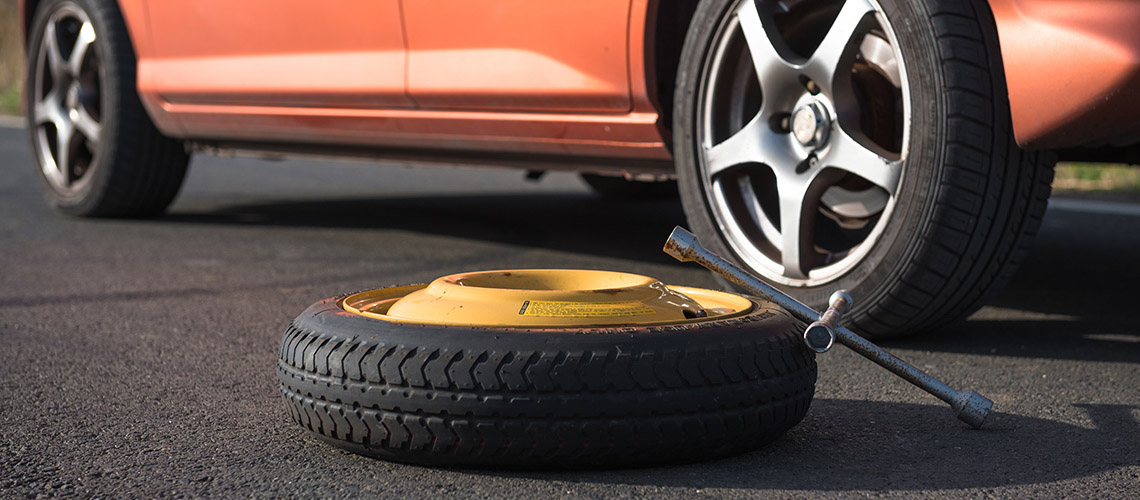Why do some cars have space saver tyres as opposed to a full-sized spare? Our Motoring Advice team is asked this question all the time. In a nutshell, modern cars are built to be as efficient and aerodynamic as possible, and a big lump in the floor doesn't help with reducing emissions.
Space saver spare tyres or temporary use spare tyres (TUSTs) are common in modern cars, although many electric vehicles (EVs), and a number of internal combustion engine (ICE) cars have none at all. Alternatives include a full-sized spare tyre, run-flat tyres and a tyre repair kit.
If you are carrying a spare, you should check its tyre pressure monthly; all tyres naturally leak air through the walls and the spare is the least checked tyre on the car. A flat spare is as useful as an ashtray on a motorbike!
If you don't have a spare and are planning on taking a long-distance trip, it's worth considering getting hold of one, or at the very least a tyre repair or emergency puncture sealant kit.
How to use space saver tyres safely
- Space savers are a temporary spare: their job is to get you to the nearest mechanic or home and out of harm's way.
- They are usually limited to a speed of 80km/h but this can vary, so always follow the manufacturer guidelines.
- You can typically drive a few hundred kilometres on a space saver tyre, depending on the brand and type.
- Ideally, they should be put on the back wheels as opposed to the steered wheels.
- Space saver tyres don’t grip the road as well as normal tyres, which reduces steering and stopping ability.
Pros of space saver tyres
- Space saver spare tyres are more compact than a full-size spare, so provide more usable boot space.
- Space saver spares are lighter, thus reducing fuel use and exhaust emissions because your car’s engine has less weight to pull.
- Space savers cost less than full-size spare wheels and tyres. This saves the car manufacturer money which may be passed on to the car buyer.
- Because space saver tyres come on a conspicuously skinny wheel, often painted bright yellow or orange, they prompt car owners to rectify the flat tyre and return the space saver to the boot. When a full-size spare replaces a flat, the flat often stays in the boot long-term, leaving you stranded the next time you need to change a flat tyre.
Cons of space saver spare tyres
- Space saver tyres only have a range of a few hundred kilometres before becoming worn out and needing to be replaced. This range is enough to get most drivers home, to a tyre store or a mechanic.
- Space savers are only good for speeds of up to 80km/h, which could slow your progress if you’re out of town and far from the nearest mechanic or tyre store.
- A car with a space saver tyre fitted won’t steer or brake as well as one with four full-size wheels and tyres, particularly in an emergency avoidance manoeuvre.
- The full-size flat sometimes won’t fit in the space saver’s position, so it takes up space in the boot or the cabin.
- With a full-size spare it’s possible to rotate your tyres using the spare, which spreads tyre wear over five rather than four tyres. You can’t do this if you have a space saver spare.
What should you choose?
It really depends on the type of vehicle you are buying and your budget. Space savers are safe and cost-effective if used to manufacturer specifications. If you buy a car with a space saver, be aware of how to use them properly.
Some car boots don’t have room for a full-size spare, which means if you choose to have a full-size wheel and tyre it has to go in the boot – permanently taking up luggage space.
Other cars with a standard space saver have room for a full-size spare, which doesn’t sound like a space saving to us.
Weigh up the pros and cons and be aware that it is sometimes possible to choose a full-size spare instead of a space saver, either at extra cost or as a no-cost option.
